Inspiratory muscle training (IMT) applies a training stimulus directly to the muscles responsible for breathing in. Evidence from human studies indicate that inspiratory muscles can adapt to exercise training (1) using inspiratory pressure threshold loading. This involves inhaling against a resistance, which induces adaptations that improve the strength, power and endurance of the inspiratory muscles. IMT has been used in humans for the management/treatment of a range of medical conditions, including exercise‐induced laryngeal obstruction (EILO) and in the treatment of breathlessness for patients with chronic lung and/or heart disease (2). The use of IMT in human athletes has also been shown to improve athletic performance by delaying onset of respiratory muscle fatigue which then decreases blood flow to the exercising limb muscles (3).
The high prevalence of upper airway obstructions in racehorses poses significant performance, health and welfare concerns to the Thoroughbred industry. Exercise‐induced laryngeal/pharyngeal obstructions can occur when the stabilising muscles of the upper airway are unable to withstand the dramatic increases in airflows and pressures that occur during maximal exercise and are usually treated surgically. Improving muscle strength and therefore stability could provide an alternative, non-surgical, functional treatment.
A study evaluating if IMT can maintain and/or improve inspiratory muscle strength variables in Thoroughbreds during detraining has recently been published (4). Thoroughbreds from one training yard were placed into a control (Con, n = 3 males n = 7 females; median age 2.2±0.4 years) or treatment group (Tr, n = 5 males, n = 5 females; median age 2.1±0.3 years) as they entered a detraining period at the end of the racing/training season. The Tr group underwent eight weeks of IMT twice a day, five days per week using custom-made training masks with resistance valves and an incremental threshold of breath-loading protocol. An inspiratory muscle strength test to fatigue using an incremental threshold of breath-loading was performed in duplicate before (T0) and after four (T1) and eight weeks (T2) of IMT/no IMT using a custom-made testing mask and a commercial testing device. Inspiratory measurements included the total number of breaths achieved during the test, average load, peak power, peak volume, peak flow, energy and the mean peak inspiratory muscle strength index (IMSi).
Data were analysed using a linear mixed effects model, P≤0.05 significant. There were no differences for inspiratory measurements between groups at T0. Compared to T0, the total number of breaths achieved (P = 0.02), load (P = 0.003) and IMSi (P = 0.01) at T2 had decreased for the Con group while the total number of breaths achieved (P<0.001), load (P = 0.03), volume (P = 0.004), flow (P = 0.006), energy (P = 0.01) and IMSi (P = 0.002) had increased for the Tr group. At T2 the total number of breaths achieved (P<0.0001), load (P<0.0001), volume (P = 0.02), energy (P = 0.03) and IMSi (P<0.0001) were greater for the Tr than Con group. The authors conclude that IMT can maintain and/or increase aspects of inspiratory muscle strength for horses in a detraining programme.
References
1. Powers SK, Coombes J, Demirel H. Exercise Training‐Induced changes in respiratory muscles. Sports Med. 1997; 24: 120– 31.
2. McConnell AK. Respiratory muscle training: theory and practice. Oxford: Reed Elsevier, 2013.
3. HajGhanbari B, Yamabayashi C, Buna TR, Coelho JD, Freedman KD, Morton TA, et al. Effects of respiratory muscle training on performance in athletes: a systematic review with meta‐analyses. J Strength Cond Res. 2013; 27: 1643– 63.
4. Katz LM, Stallard J, Holtby A, Hill EW, Allen K, Sweeney J (2020) Inspiratory muscle training in young, race-fit Thoroughbred racehorses during a period of detraining. PLoS ONE 15(4): e0225559. Click HERE


